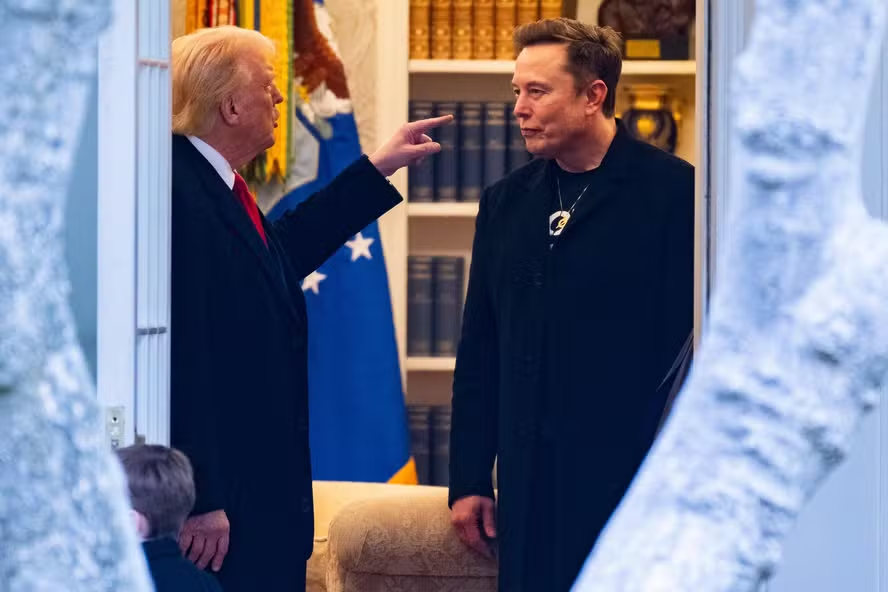Promulgated in August 1973, the Treaty between the Federative Republic of Brazil and the Republic of Paraguay created Itaipu as a binational entity. Since 1984, when it began operating, Itaipu has been producing clean, renewable energy (the largest generator of this type of energy in the world). Currently, the plant is responsible for producing almost 9% of all the energy consumed in Brazil and more than 80% of that consumed in Paraguay, according to information on the binational’s website. These figures, as well as highlighting the importance of the plant, underline the importance of renegotiating the more than 50-year-old agreement for both countries.
Created with the aim of exploiting the water resources of the Paraná River, the Itaipu Treaty stipulates that, as established in Article XIII, “The energy produced by the hydroelectric exploitation referred to in Article I shall be divided equally between the two countries, each of which shall be recognized as having the right to acquire, in the manner established in Article XIV, any energy not used by the other country for its own consumption”.
Thus, Brazil buys Paraguay’s energy surplus through ENBPar (Empresa Brasileira de Participações em Energia Nuclear e Binacional), according to the terms of the agreement. Annex C, which deals with the agreement’s financial basis, is the renegotiation’s main point. As stipulated in this annex of the treaty, the Cost of the Electricity Service would be made up of annual installments relating to the payment of the financial charges on the loans received, the amortization of the debt, the payment of royalties, the payment of administration fees to Eletrobrás and ANDE (Administración Nacional de Eletricidad) for the costs of running the plant, etc. While the Brazilian government had hoped that after the debt was paid off, which happened in February last year, the price of the tariff would go down, the Paraguayan government wants to increase it.
The stalemate

Brazil currently pays a flat rate of US$16.71 per kilowatt (kW) and had hoped that the tariff would drop to around US$12, but Paraguay wants to charge more than US$20. The stalemate between the countries has led President Santiago Peña to state that, if there is no agreement between the parties, Paraguay should be able to sell its surplus to third parties. Greater leeway in negotiating the Paraguayan surplus – to whoever would pay the most – would mean a significant change in the terms of the treaty since currently the sale of surpluses takes place exclusively between the parties. For some internal Paraguayan sectors, this would be the main point of disagreement, since even if a tariff were agreed, upon if Annex C were kept as it is, the sale of the surplus would continue to take place at cost price to ENBPar, which in turn resells the energy to various private companies in the Brazilian market.
The expectation of a reduction in the price of energy is because the value of the loans represented around 60% of the Electricity Service Costs. In the absence of payment of these costs, another important issue arises concerning Annex C of the treaty. This refers to the allocation of the resources (estimated at 2 billion dollars a year) that will remain in cash, since, as already mentioned, the debt contracted for the construction of the hydroelectric plant has been paid off. An example of the allocation of these funds, which began under the previous government, was for the second bridge between Brazil and Paraguay, with the construction of the eastern perimeter of Foz do Iguaçu (PR), which should be completed next year. The current government aims to use the resources from Itaipu in areas such as research and innovation, the so-called social spending, which is also of interest to Paraguay since the binational’s objective is not to generate profit.
Furthermore, Brazilian society is questioning the transparency of this process of allocating resources to social projects. In addition to concerns about corruption and the misuse of the money generated by Itaipu, Brazilian civil society is concerned about the excessive burden on consumers. This would occur if the Paraguayan proposal to raise the tariff (above the real cost) to 20.75 or even 22 US dollars were agreed, which would impact the price of electricity in at least three regions of the country. On the other hand, a reduction in the cost of energy, even if it made it cheaper for Brazilians, would mean a loss for Paraguay, which sees the possibility of a tariff increase as an opportunity to strengthen the aforementioned social spending. For Paraguay, development is sought for both countries through the social investments provided by Itaipu.
In the domestic politics of the neighboring country, the issue is more mobilizing than in Brazil and therefore attracts even more attention in the country’s media. In an editorial, the Paraguayan newspaper ABC Color pointed out that Paraguay does not receive a fair price for the transfer of its surplus and that even an increase in the tariff would not be a solution to the issue, since, according to the editorial, the compensation paid by Brazil would be derisory. As a result, it’s not hard to imagine that the Paraguayan government will be less flexible in the negotiations so as not to appear weakened in the eyes of national public opinion. On the other hand, for Brazil, maintaining or slightly increasing the tariff is much more feasible than changing the exclusivity of the right to purchase.
Amid the impasse, Itaipu employees have been facing delays in salary payments. Likewise, the binational company has delayed paying bills and suppliers. However, the disagreement between Brazil and Paraguay has not affected the plant’s payments to the neighboring state. The amounts paid for the transfer of energy in January came to US$21,999,500 – 0.4% more than in the same month last year. In any case, Ernio Verri, Itaipu’s Brazilian director-general, expects a resolution on the tariff later this month.
Relevance of the agreement
Despite declarations by both presidents of their desire to resolve the issue, Lula and Peña are still facing an impasse. Itamaraty resists classifying the situation as a crisis, but it has proved to be a diplomatic challenge for the friendly nations. According to Ernio Verri, the negotiations could last three years or more. After a meeting between the presidents in Brasilia on January 15 this year, it became clear that Paraguay does not seem to be willing to give in on the surplus tariff. President Lula is due to travel to Asunción to continue the negotiations at presidential level, once the talks between the foreign ministers have progressed.
Given the extreme importance of the renegotiation for both countries, Ruben Ramírez stressed: “We are not confronting Brazil, we are negotiating with them,” reported La Nación. In this sense, it should be noted that Brazil is Paraguay’s main trading partner. In addition, the relationship of interdependence between the parties encourages swift negotiations. Furthermore, it is crucial to remember that the financing for the construction of the binational dam came almost entirely from Brazilian resources. The debt paid off and the renegotiation process should certainly seek to favor the public interest of both nations.
References
https://www.planalto.gov.br/ccivil_03/decreto/antigos/d72707.htm
https://www.gazetadopovo.com.br/parana/itaipu-revisao-anexo-bilionario/
https://www.gazetadopovo.com.br/parana/senado-cobra-transparencia-gastos-itaipu-destino-bilhoes/
https://www.itaipu.gov.br/institucional/financiamento-da-construcao-de-itaipu



